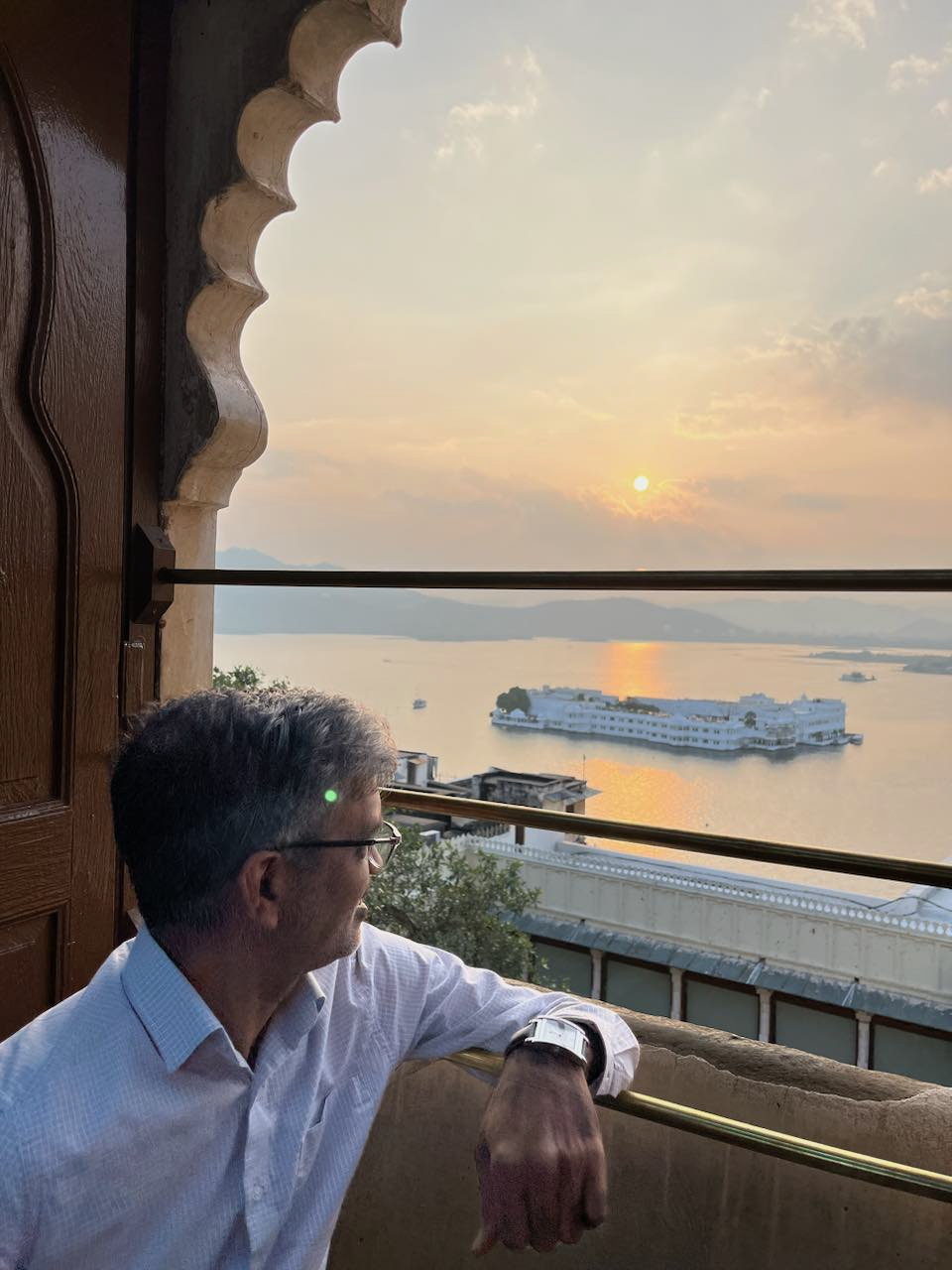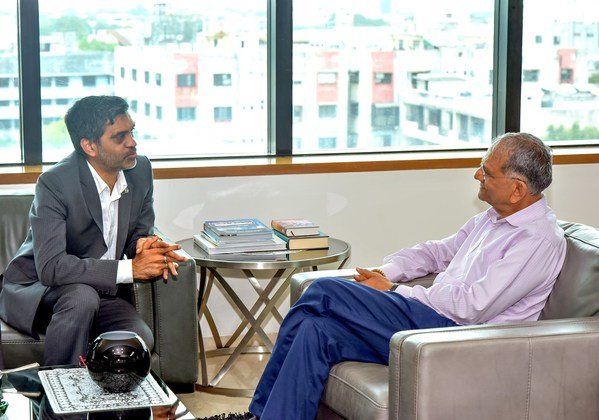Dispatches in Decarbonization: Overcoming Decision Paralysis for a Decarbonized World
This article first appeared in Mahesh Ramanujam’s monthly LinkedIn newsletter, Dispatches in Decarbonization, on May 7, 2024. Subscribe on LinkedIn to receive these updates.
Around the time I was transitioning from CIO to COO at the U.S. Green Building Council — sometime after the 2008 market crash but before the 2015 Paris Agreement — I read the Nobel Prize winning book, Thinking Fast and Slow. It felt like I was reading it at a crossroad for both the green building movement and myself. The book aligned with my affinities for the interconnection of technology, spirituality, science, and sustainability. But most importantly, it helped me study the ‘why’ behind my decision making and the pace at which I was intent on pursuing transformation in both my personal and professional life.
Fast forward to today: I’ve chosen to pick it up again because it reminds me of why I started the Global Network for Zero, or GNFZ. The problem in green building and sustainability is that the obstacles we are talking about can seem abstract, both in their physicality and in the timeline of impact. We talk in absolutes and mention the points of no return. But rarely do we contextualize the ways in which decarbonization isn’t just one thing we should do — it’s the one thing we must do.
That’s what I’d like to do with this newsletter. For my inaugural dispatch, I want to give a closer look at what led to the founding of GNFZ, how Thinking Fast and Slow informed me and could inform successful emissions reduction strategies, and where we collectively go from here.
From Awareness and Adoption to Today’s Global Acceleration to Zero
During my time at USGBC, my team and I made extraordinary strides in growing awareness and adoption of green building, expanding LEED from 35 to 182 countries and territories.
But nearly three years ago, after I left USGBC to start GNFZ, I was finally ready to reflect on what was still missing to fully decarbonize the built environment. It was during this inflection that I first decided to revisit the philosophies of Thinking Fast and Slow. The book proposes that every human being has two systems: one that is intuitive, emotional, and gut-driven, and one reserved for slower, logical, and methodical decisions.
While beginning my new chapter, I was interested in examining the way forward through the latter — through an intentional analysis of my own state of being and the state of the world. After all, in 2021, we were at the height of the pandemic and, amidst so much grief, I was ready to look at the external systems in our cities and communities and identify where we were all collectively failing each other.
For three decades, the mainstream population had certainly heard of green building, but the average person still didn’t know that 40% of the world’s emissions come from the built environment. And while there had been an uptick in awareness and adoption of green building, we lacked the urgency needed to accelerate decarbonization at scale.
Planning Fallacy, Paralysis, and Posing Difficult Questions
I wanted to dig deeper and figure out why, after all this time, it’s not that we as green builders had gotten it wrong. It’s that we hadn’t gotten it right, either.
In Thinking Fast and Slow, Kahneman writes that for human beings, “the illusion that we understand the past fosters overconfidence in our ability to predict the future.” For me, this was never truer than in considering how far we’d come in decarbonizing the world versus how far we’ve yet to go. Kahneman cautions that often, we are conditioned to move quickly without thinking too much in the moment, even if it requires it. He points to our penchant for ‘planning fallacy,’ a uniquely human proclivity to underestimate the challenges and risks associated with a project at hand. And he also takes us through ‘prospect theory,’ where he weighs whether human beings are incentivized more by the threat of losses than the prospect of gains.
The pandemic revealed that the systems designed to protect us were, in fact, failing us. And in turn, we were failing each other. The building sector was no exception and the numbers didn’t lie. After tireless years of work, only 0.023% of all the buildings in the world were net zero — and most were “net zero energy” — meaning they only accounted for Scope 1 and 2 emissions, and ignored Scope 3.
We were caught in leadership decision paralysis. The public sector had been counting on the private sector to do the heavy lifting. And the private sector had been tip-toeing around an evolving frontier of fines, penalties from governments beholden to oil, contradictory standardization processes, and often a C-suite or shareholder belief — albeit an incorrect one — that people, planet, and profit cannot go hand in hand.
For me, this was the lightbulb moment where we could finally put an end to the stagnancy. Where I could take greater accountability and stop assuming that the achievements of the past would be enough to accurately inform the decisions for our future. I could flip everything I’d learned in my career, everything I’d wished I’d been able to do for my own community in their darkest hour, and what I was gleaning from Kahneman’s advice to simply slow down. This is where I could really make a difference.
I set out to do some of the most tedious but important thinking of my life. And I began by asking difficult questions:
Why, after thirty years of green building, and in the midst of a world in desperate need of cleaner air, was there not a greater acknowledgment of the interconnectivity between health and climate change — or a deliberate push to retrofit buildings for long overdue improvements in indoor air quality?
Wasn’t this the time to reassess the barriers to decarbonization that have kept us from making transformational change in the building sector and beyond?
And is it possible that if we truly stop, if we meet this moment by thinking slowly, we could actually accelerate the work of decarbonization?
Creating the World’s Premier Net Zero Certification Body
That’s what we’ve set out to do with GNFZ.
We’ve created a solution where a more deliberate decision-making approach will serve as the engine for accelerating a net zero world. We’ve designed the world’s only incremental approach to net zero certification — which is to say we’ve made it so that organizations can start anywhere and end at zero. We’ve also introduced the world’s only Scope-3 centric solution for reaching net zero — which empowers buildings and businesses to tackle their biggest category of emissions from the onset, and do so in an affordable, accessible fashion.
And since our inception, what I’ve learned while traveling the world is that it’s not just me who is hungry for the kind of progress that demands deliberation and long term, sustainable progress. The leaders I’ve had the privilege of meeting with have two items on their net zero wish list:
First: They want a clear definition for what net zero actually means.
Second: They want a solution to the barriers that had traditionally plagued the emissions reduction and elimination strategies of the past.
A universal definition for net zero remains elusive — as does the prospect of breaking down barriers that persist as a result of language lacking in substance, among other things.
But as the world’s premier net zero certification body, GNFZ is addressing these challenges.
We define net zero as the elimination of Scope 1, 2, and 3 emissions. We also ensure that at the core of our certification process is barrier elimination and an approach that allows our partners to slow down and embrace incremental acceleration and the lasting decarbonization of their operations.
Gaining Ground on Shifting to Zero
For me, this is a paradigm shift. What I am seeing in the U.S., India, Europe, Asia, and other markets, is a seismic change in how people understand the stakes of a warming world. If I take Kahneman’s prospect theory and apply it to the decisions we are making around decarbonization, one thing seems clear: When it comes to reducing emissions, we are witnessing the perpetuation of a generation of ‘loss averse’ people — a generation for whom, in Kahneman’s words, “losses loom larger than gains.”
To be honest, climate rhetoric is rooted in the assumption that people prefer to live in a loss averse, scarcity mindset. We talk about what won’t be left in the world if we don’t hit our targets. We give speeches about what our grandchildren won’t have if we don’t do the hard work now — and we do this because stating the grim stakes at hand feels necessary to move the needle on climate action. But if we go back to Kahneman and consider specifically how we talk about and tackle decarbonization, we can and will sober up.
Three years ago, I had my epiphany — that decarbonizing the world at scale would only come when the dam breaks, and when we realize that we can learn from our shortcomings, think slowly, and accelerate a world without harmful emissions and that includes every one of us. That time has come.
A Community in Conversation
With this newsletter, I intend to share with you best practices in decarbonization from all around the globe. But I’m also going to share with you what we’re improving on and where we can and must deliberately focus on doing more.
During GNFZ’s founding, I confided in my co-founders and in other collaborators about my own personal belief in thinking slowly, ending the decision paralysis around decarbonization, and finally securing the net zero future we deserve. And as we expanded our work, I have endeavored to expand this conversation — particularly so that we continue to ask leaders what they want and need to make this future a reality.
It is my sincere hope that together, we can slow down and continue this dialogue here — and that in the process, if you have questions you want answered, communities you want to connect with, systems you wish to overhaul, or stories you have to share, you know you can always come here to have a word with me.
Learn more about how GNFZ is putting net zero within reach →






